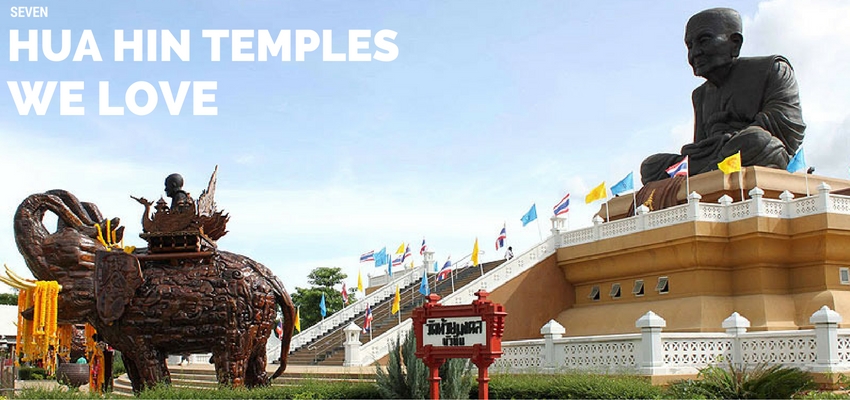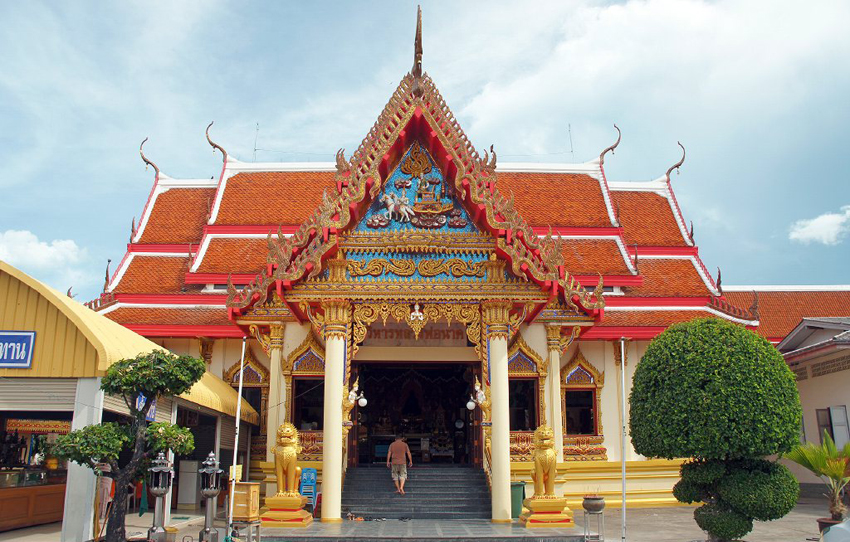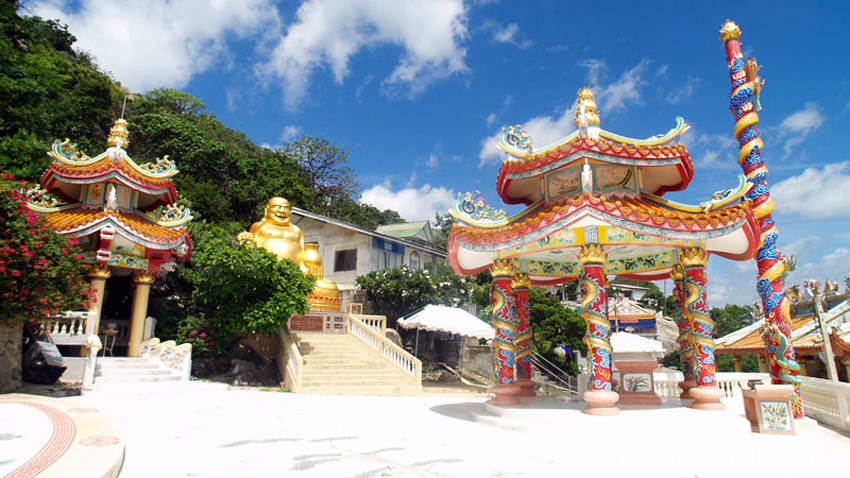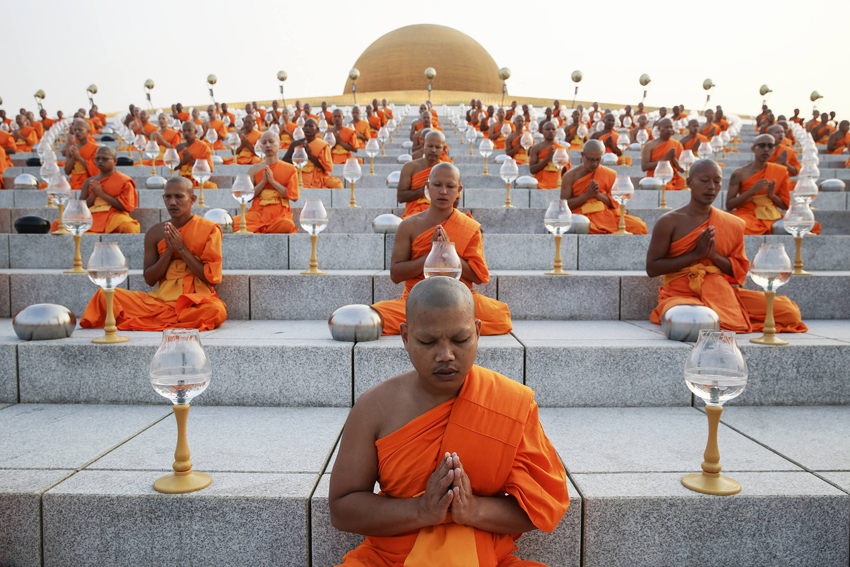Press Room
Seven Hua Hin Temples We Love, and You Will, Too!

Hua Hin is a popular coastal resort in Thailand, and it belongs to the district of the same name. It is located in the Prachuap Khiri Khan province along the Gulf of Thailand. Originally a fishing village, Hua Hin was converted into a resort by the royal family in the early 1920s. The king ordered the construction of a summer palace called Wang Klai Kang Won, which means “Far From Worries Place.”
95 percent of the people in Thailand are Buddhist, so there are temples all over the country. Hua Hin is no exception to this rule.
Wat Hua Hin
Also known as Wat Ampharam, Wat Hua Hin is the most important temple in Hua Hin. It is located in the center of town and is also a monastery. Wat Hua Hin is more of a place of worship for locals than a tourist attraction, but it does offer meditation sessions in the afternoon. Its elaborate decorations set it apart from the neighboring buildings. The interior has murals that depict scenes from the life of Buddha, and there are golden statues of the Buddha.


Wat Bor Fai
Wat Bor Fai is around 5 km (3.1 miles) north of Hua Hin. It is known for its many ponds filled with sacred catfish. Visitors may feed the catfish after giving the monks a small donation. The complex is located along the Khao Takiab –Hua Hin Road.
Wat Huay Mongkol
Wat Huay Mongkol is about 10 km (6.2 miles) west of Hua Hin and is a popular destination for Buddhist pilgrims. Thousands of pilgrims visit the temple every weekend to honor Thailand’s largest Buddha image of Luang Phor Tuad (1582-1682). The statue, which show the famous monk seated, is 12 meters (39.4 feet) tall. The statue sits on a pedestal with a wooden elephant on either side. Walking in circles under the belly of an elephant is supposed to bring good luck.
The entire complex is located in a park-like setting that boasts a lake, several streams, waterfalls, pavilions, bridges and many shady places. Wat Huay Mongkol also has a temple, several restaurants, shops that sell Buddhist amulets and a statue that depicts King Taksin the Great (1734-1782) on horseback.
Given the popularity of the complex with pilgrims, tourists would be advised to visit it during weekdays when it is less crowded.
Khao Takiab Temple
The Khao Takiab Temple is around 7 km (4.3 miles) from Hua Hin. Khao Takiab, which means “chopstick hill,” is actually the name of the village. Khao Takiab is a quiet village, but it has a beach and several seaside restaurants. The temple, which sits on top of the hill, is more formally called Wat Khao Lad. Many monkeys live in or near the temple, so it is sometimes also called “the monkey temple.”
There are several ways to reach the temple. One way is to simply climb the stairs. Visitors may pause during their climb and enjoy the view. On a very clear day, they may see as a far as the Cha-Am beach. Other transportation options include motorbike, taxi or tuk tuk.
The temple’s best known feature is the statue of Buddha that stands 20 meters (65.6 feet) tall and is located at the base of the hill.


Wat Khao Krai Lart
Wat Khao Krai Lart is 6.3 km (3.9) miles of Hua Hin and sits on a mountaintop between two other temples on mountains. Visitors need to climb stairs to reach it, so not many tourists visit the temple. Visitors can enjoy panoramic views of the surrounding area and the sea. There are fish ponds and several statues of the Buddha. Feeding the fish supposedly brings one luck.
Wat Khao Sanam Chai
Wat Khao Sanam Chai boasts white buildings with gold trim and sits on a high ridge about a mile south of the intersection soi 112. The buildings are also festooned with flags and bells. The wat offers panoramic views that are especially impressive at sunset, so the temple is particularly popular in the evening.
Wat Khao Takiap
Wat Khao Takiap sits on a hill also called Khao Takiap. Visitors may walk up the steps to reach it or take a tuk tuk. The temple boasts a large statue of a standing Buddha and several rows of bronze bells. A sizeable troop of mischievous monkeys make their home around the temple – and they will steal food or small items from the unwary.

Temple etiquette
A temple is a place of worship, so it is important to always behave respectfully when on temple grounds. Visitors should dress conservatively. Men should wear tailored shirts and long trousers. Women should keep their shoulders, knees and breasts covered and may not wear short skirts or bikini tops.
Visitors should not climb on statues or touch their heads. In Thailand, the head is considered the cleanest and holiest part of the body, and touching anybody on the head is considered extremely rude. The feet, by contrast, are considered unclean, so having them pointing towards a temple, monk or sacred image is considered highly offensive. Visitors are also required to take their shoes off before entering a temple.
The monks should also be treated with respect. Visitors should not stand higher than a monk. The monks are not allowed to have any physical contact with women; they can’t even let a woman hand something to them. Female visitors who want to give a monk something should place it on the ground in front of him.
Terminology
Wat means “temple complex.” All wats consist of a group of buildings enclosed by a wall. The first buildings to be constructed are the bot, stupa and viham.
The bot, also called the phra usobot, is the ordination hall and main prayer room. New monks take their vows in this structure. The bot is used for other important rituals. It is always a square building and its entrance traditionally faces east.
The stupa, also called a chedi or pagoda, is the holiest part of the wat. It is usually conical or bell-shaped. Early stupas contained relics of the Buddha, while later stupas contain the remains of kings or prominent monks.
The viharn is the assembly hall. Monks and lay people alike will gather in the viharn to pray or take part in various rituals.
A wat can also include libraries, schools, scripture halls, monasteries and crematoria.
